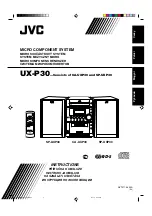
CR44/54 Radar menu
Chapter 3-3
Buoys are moored to the bottom with concrete via chain. The chain
is longer than the depth of the water to allow the buoys to ride in the
current and go up and down with the tide. Unfortunately this allows
the buoys to lean in the direction of the current. Radar reflectors
built into the buoy do not work well when the side of the buoy is
pointed to the sky. Therefore if you are going with the current, the
images of the channel markers may appear faint. If you are going
against the current, the buoys will be leaning in your direction and
produce a stronger image on the radar screen.
The iron mass and angles of the metal in the structure of a bridge
can cause unpredictable interference patterns on your radar. It is
not unusual for a reflected image to appear on the radar screen in
front of you just as you pass under the bridge. A similar effect is also
common on sailboats where the radar antenna is mounted close to an
aluminum mast.
Overhead cable crossings can mimic a moving target on your radar
screen. The cable target usually appears to be on a collision course.
The entire length of cable does not appear on the screen, only a point
on the cable, and that point keeps changing giving the illusion of a
moving target.
3.1.3 Effects of ship’s movement
Radar images can be drawn in two ways on the radar display to show
the ship’s motion. The type of display modes are called “Relative
motion” and “True motion”. In Relative motion, the most common
radar display mode, own ship is permanently fixed at the center of
the display and radar echoes (targets) move in relation to your vessel.
With no movement of the ship, a steady display of fixed radar echoes
is shown. If the ship is moving ahead on a constant course, echoes
appearing at the top of the display will move downward across the
display. Your own ship’s position will always remain at the center of
the display.
If the vessel alters course to the right, the displayed echoes will
be displaced by an equal amount in bearing in a counterclockwise
direction, and vice versa. These changes in the display pattern with
ship movement is an extremely important characteristic to remember
when maneuvering around nearby vessels, or buoys.
The True motion display mode can be compared to your vessel
Содержание CR44
Страница 50: ...Chapter 3 28 CR44 54 Radar menu...
Страница 76: ...Chapter 5 4 CR44 54 Echo menu...
Страница 96: ...Chapter 6 20 CR44 54 Pilot menu navigation examples...
















































